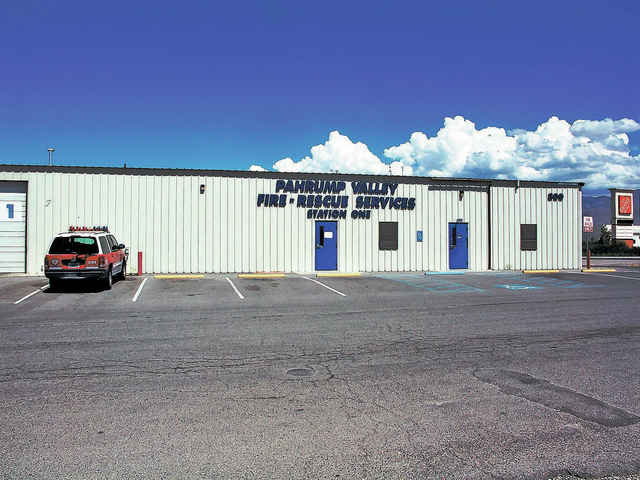
A leaky water pipe led to the discovery of a potential health hazard inside the town’s main fire station.
A “bio room” at Pahrump Valley Fire and Rescue Services’ Station One on Highway 160 was shut down for a time when black mold was discovered there late last month.
Interim Town Manager Susan Holecheck says steps were immediately taken to mitigate the toxic fungi, known as Aspergillus, which was discovered by chance.
“Some members of the fire department saw water coming underneath the door of the bio room. Once they opened up the walls they saw a substance that they were not sure about. They then put me on alert and I opened up a claim with POOL/PACT. We had a company called Belfor come out from Las Vegas and they specialize in hazardous materials and mold remediation. We could not have worked any faster just to make sure everybody was protected,” she said.
It is unclear how long the mold was growing before it was detected.
Holecheck said the contamination was contained to just the bio room space at the fire department. The room was completely sealed to prevent airborne mold spores from spreading via the facility’s ventilation system.
“Nothing was found anyplace else so we are able to take care of the bio room with no problem at all. It was caused by a damaged water pipe,” she said.
According to the Centers for Disease Control, exposure to some types of black mold can have a wide range of effects in the body’s respiratory system.
Depending on the length of exposure and the volume of mold spores inhaled or ingested, symptoms can manifest as chronic fatigue or irritation to the eyes, mucous membranes of the mouth, nose and throat.
In more severe cases of exposure, symptoms can be extreme, including nausea, vomiting, and bleeding in the lungs and nose.
Town Board member Amy Riches says she has personal experience with the dangers of black mold.
Riches was forced to abandon much of her family’s personal belongings due to black mold contamination inside her home — not once, but twice.
“I got Stachybotrys and Aspergillus in my house and it had to be remediated and I lost almost everything. My house was rebuilt and refurnished. When we turned the air conditioner on, we discovered that they had forgotten to do the ducting. I lost everything again and I ended up having to have surgery. So I take mold very, very seriously,” she said.
The last time the town was faced with a black mold infestation was in late 2010, when town officials decided to close the Bob Ruud Community Center after a heavy rainstorm damaged the roof and created the presence of the fungi in several areas of the building’s interior roof.
All told, the tab for the project cost the town roughly $86,000.
Prior to that incident, in 2009, inmates housed in the Pahrump jail were shipped out to other detention locations while the county investigated mold found behind a laundry machine.
The mold was discovered Jan. 7 during a health inspection. The county spent roughly $10,000 in overtime to transport the inmates.
Although mold is not covered under the town’s insurance policy, the damage occurred as a result of water leakage, which is covered.
The bio room remains closed until crews mitigate the mold.